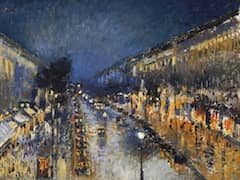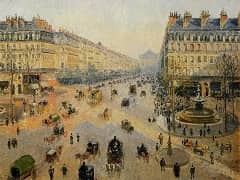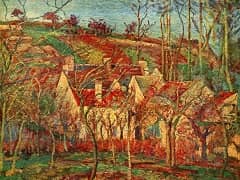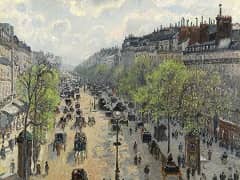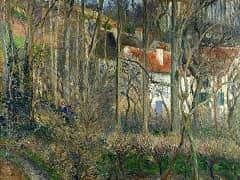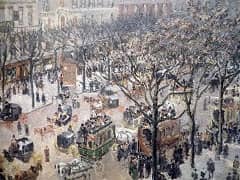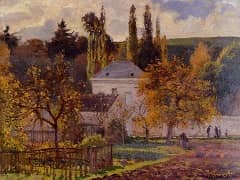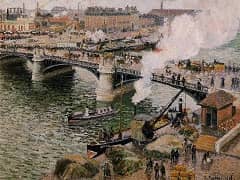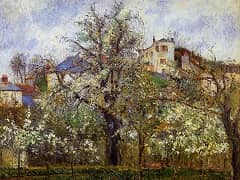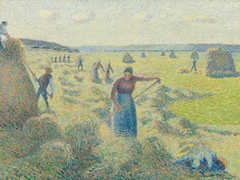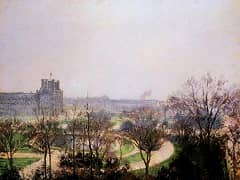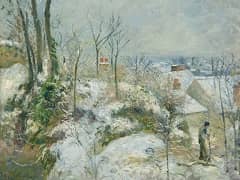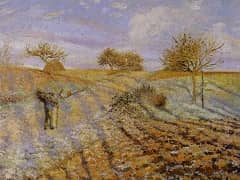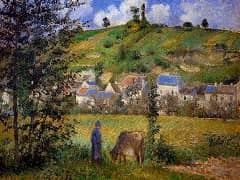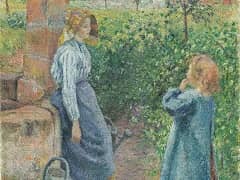The Hermitage at Pontoise by Camille Pissarro
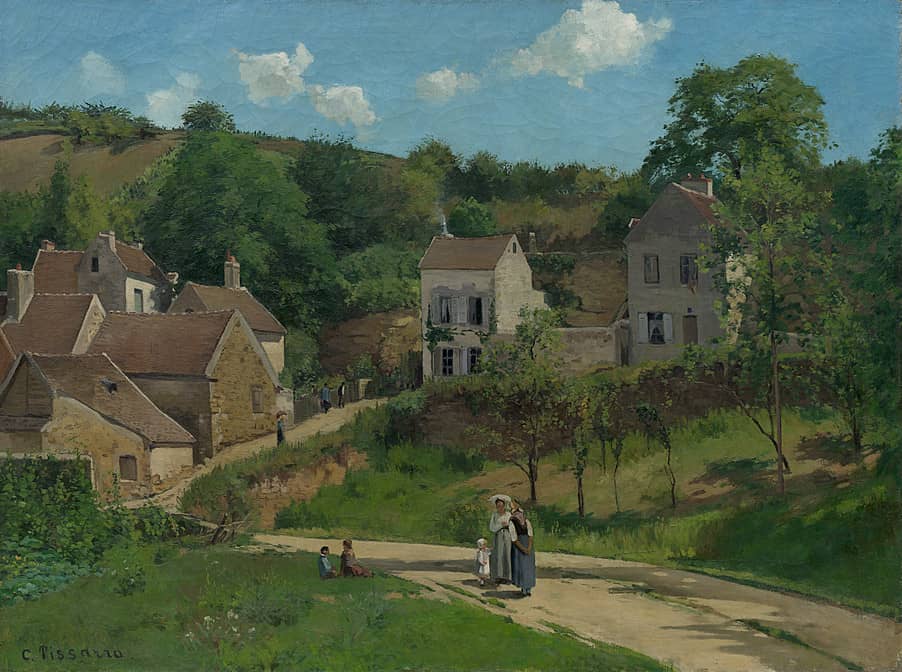
The view represented here is a winding village path at the base of a cluster of houses in Pontoise, France, known as the Hermitage. Camille Pissarro lived there on and off between 1866 and 1883, choosing the rural environs of the provincial capital for a series of large-scale landscapes that have been called his early masterpieces. Pissarro's idyll, replete with villagers and neatly tended gardens, is more than just the naturalist painter's attention to perceived reality. It is a continuation of the French academic landscape tradition, which stretched from the allegories of Poussin to the proto-Cubist landscapes of Paul Cezanne, who studied and worked with Pissarro.
Pissarro stripped his painting of the historical or sentimental over-tones that characterized the landscapes of his immediate predecessors. And he made magisterial use of light and dark, demonstrating more than a mere interest in the effects of sun and shade. As art theorist Charles Blanc wrote at the time, this type of articulation was meant "not simply to give relief to the forms, but to correspond to the sentiment that the painter wishes to express, conforming to the conventions of a moral beauty as much as to the laws of natural truth."

